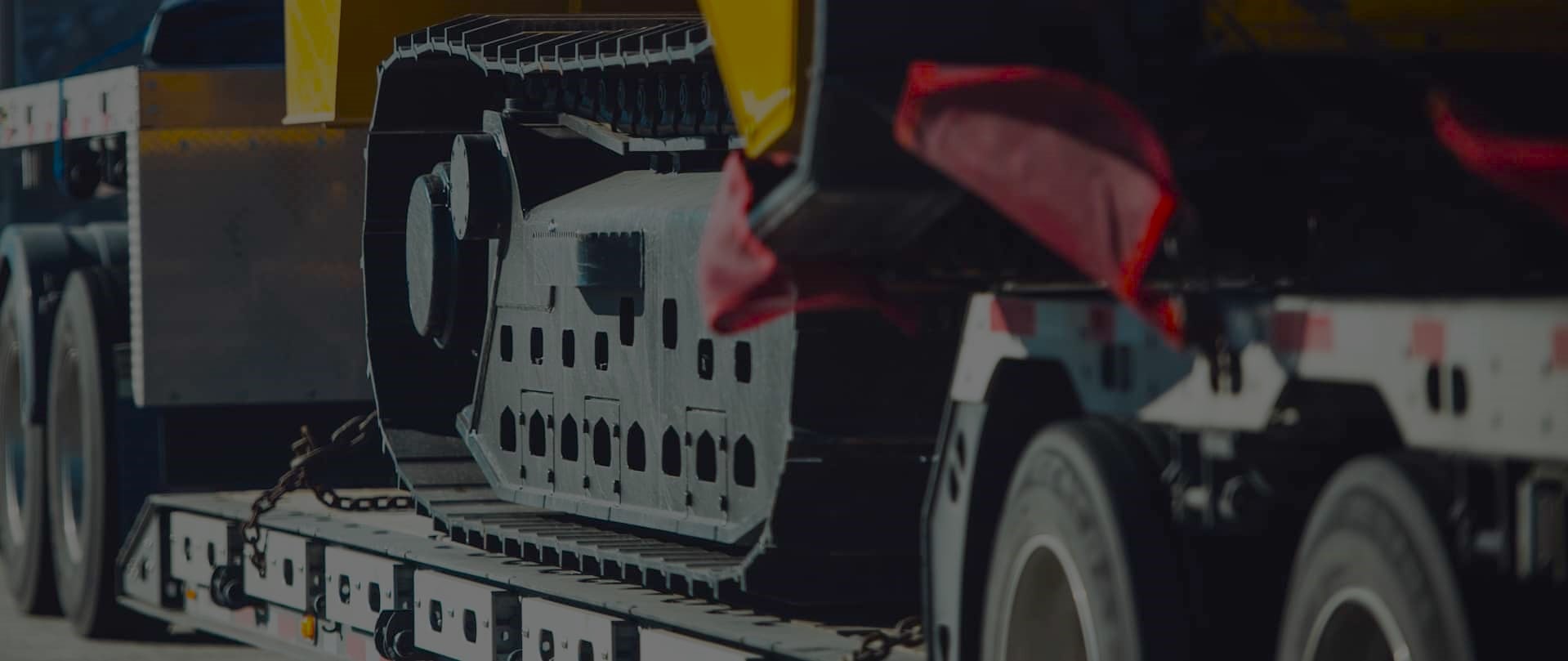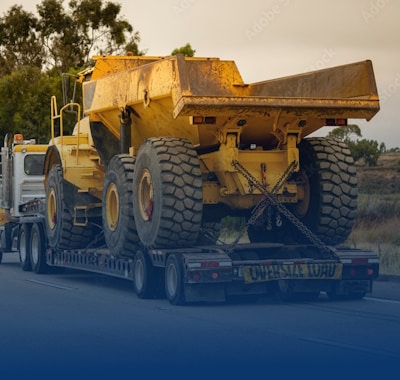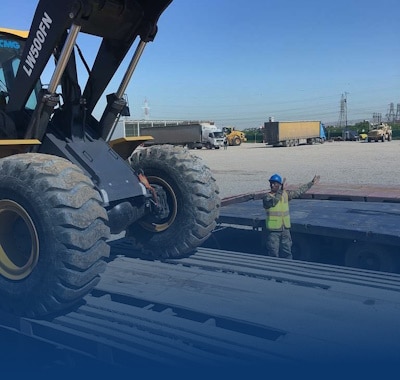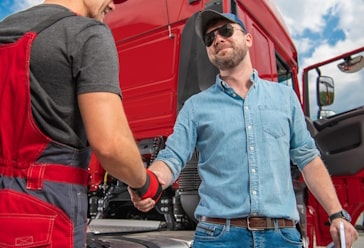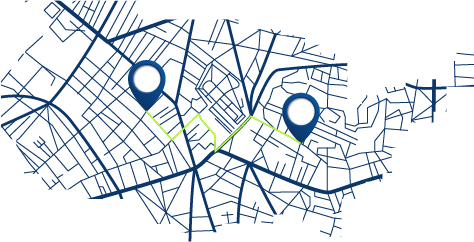Managing Risk in Heavy Haul Transportation: Best Practices
Freedom Heavy Haul can offer expedited Pickup and Delivery for any size shipment anywhere in the USA. Contact us today for No Hassle, No Pressure Pricing.
Safety is the cornerstone of every successful heavy haul operation. When moving oversized loads, even the smallest oversight can lead to significant challenges. From route planning to equipment selection, every step must be meticulously executed to ensure the protection of drivers, cargo, and infrastructure.
One critical aspect is load securement. Improperly secured machinery can shift during transport, posing serious risks to the vehicle and others on the road. Pre-trip inspections are equally vital, as they help identify potential issues before they escalate into costly or dangerous situations.
Our team emphasizes compliance with regulations and thorough preparation. By addressing every detail, from permit acquisition to training, we minimize risk and ensure smooth operations. Learn more about our systematic approach to heavy haul safety here.
With the right strategies, we can navigate the complexities of hauling oversized loads while prioritizing safety and efficiency. Let’s explore the best practices that make a difference.
Understanding the Unique Challenges of Heavy Haul Transportation
The heavy haul industry faces unique challenges that demand careful planning and execution. Transporting oversized and overweight loads introduces risks that require specialized strategies to ensure safety and efficiency. From shifting cargo to navigating complex roadways, every step must be meticulously managed.
Key Risk Factors in Oversized and Overweight Loads
One of the primary concerns in heavy haul transportation is the shifting load. Improperly secured cargo can move during transit, destabilizing the vehicle and increasing the likelihood of an accident. This is why precise load securement and regular inspections are critical.
Additionally, the weight and size of the cargo can strain equipment and infrastructure. Low bridges, narrow lanes, and weight-restricted roads further complicate the process. These factors highlight the need for thorough route planning and permit acquisition.
Environmental and Road Condition Impacts
Environmental factors like weather conditions can significantly impact heavy haul operations. Rain, snow, or high winds can make roads slippery and reduce visibility, posing additional risks to driver safety. Extreme temperatures can also affect equipment performance.
Road design plays a crucial role as well. Narrow lanes, sharp turns, and uneven surfaces can create obstacles for oversized loads. Navigating through construction sites or traffic-heavy areas requires expert coordination and real-time monitoring. For more insights on managing these challenges, visit our guide on safe and secure heavy hauling.
By addressing these unique challenges, we ensure the safe and efficient transport of oversized loads. Our focus on safety and compliance helps minimize risk and protect both drivers and infrastructure.
Assessing Load Specifications and Equipment Requirements
Accurate load assessment is the foundation of safe heavy haul operations. Every load must be evaluated for its weight, dimensions, and center of gravity to ensure stability during transport. These factors directly impact the choice of equipment and the overall safety of the operation.
Evaluating Weight, Dimensions, and Center of Gravity
Understanding the weight and size of the cargo is the first step in planning a successful haul. Oversized or overweight loads require specialized handling to prevent accidents and structural damage. The center of gravity is equally critical, as it affects the balance and stability of the vehicle.
Improper assessment can lead to shifting cargo, which increases the risk of accidents. We recommend using precise measurement tools and consulting industry standards to ensure accuracy. For more insights, refer to our Ultimate Guide to Heavy Hauling.
Selecting the Right Trailer and Equipment
Choosing the appropriate trailer is essential for maintaining safety and compliance. Different loads require different types of equipment, such as lowboy, step-deck, or multi-axle trailers. Each option has unique features designed to handle specific cargo types and sizes.
Matching the trailer to the load ensures stability and reduces the risk of accidents. Below is a comparison of common trailer types:
| Trailer Type | Best For | Key Features |
|---|---|---|
| Lowboy | Oversized machinery | Low deck height, high weight capacity |
| Step-Deck | Tall equipment | Two-level deck, versatile design |
| Multi-Axle | Heavy loads | Enhanced stability, weight distribution |
By carefully evaluating load specifications and selecting the right equipment, we ensure safe and efficient transport. Our approach minimizes risks and protects both drivers and infrastructure.
Planning a Safe Route for Oversized and Heavy Loads
Effective route planning is the backbone of successful oversized load transport. It ensures that every journey is safe, efficient, and compliant with regulations. Without proper planning, physical obstacles like low bridges and narrow roadways can create significant challenges.
Identifying Clearance Issues and Weight-Restricted Roads
One of the first steps in route planning is identifying clearance issues. Low overpasses, narrow lanes, and restricted roads can halt progress if not accounted for. Real-time data and advanced mapping tools help pinpoint these obstacles before they become problems.
Weight restrictions are another critical factor. Many roads have limits on the weight they can support. Exceeding these limits can damage infrastructure and pose safety risks. Using specialized software, we ensure our routes comply with all restrictions.
The Role of Technology in Route Optimization
Modern technology plays a vital role in route planning. GPS tracking and dynamic rerouting tools allow us to adapt to unexpected changes like traffic or construction. These tools not only save time but also reduce costs and enhance safety.
Here are some key benefits of advanced route optimization:
- Avoids physical obstacles like low bridges and narrow lanes.
- Ensures compliance with weight restrictions and local regulations.
- Minimizes delays caused by traffic or road closures.
By leveraging technology and thorough planning, we ensure the safe and efficient transport of oversized loads. Our approach not only minimizes risks but also improves overall operational efficiency.
Complying with State and Federal Regulations
Navigating state and federal regulations is essential for safe and efficient heavy haul operations. Compliance ensures that every load is transported legally and securely. Failure to adhere to these standards can result in fines, delays, and increased risk.
Understanding Permits, Escort Vehicles, and Legal Limits
Permits are a critical component of heavy haul compliance. Each state has unique requirements for oversized and overweight loads. Proper documentation ensures smooth passage and avoids legal penalties. We prioritize obtaining the right permits for every project.
Escort vehicles play a vital role in ensuring safety on the road. They guide drivers through challenging routes and alert other motorists to the presence of oversized cargo. Their use is often mandated by state laws, especially for exceptionally large or heavy loads.
Legal limits on weight and dimensions vary by jurisdiction. Exceeding these limits can damage infrastructure and compromise safety. Our team meticulously reviews all regulations to ensure full compliance. This approach minimizes risk and protects both drivers and the public.
By staying updated on evolving regulations, we maintain industry leadership. Compliance is not just about avoiding fines—it’s about upholding the highest standards of safety and professionalism in every transport operation.
Securing Cargo: Best Practices for Overloaded Trailers
Proper cargo securement is essential for safe and efficient transport. When dealing with oversized loads, even minor shifts can lead to significant risks. We prioritize using the right equipment and techniques to ensure stability and safety throughout the journey.
Choosing the Right Tie-Downs and Securement Equipment
Selecting high-quality tie-downs is the first step in securing cargo. Chains, binders, and straps must meet or exceed industry standards to handle the weight and size of the load. We recommend using equipment rated for at least 1.5 times the expected force to ensure durability.
Here are key factors to consider when choosing securement tools:
- Material Strength: Opt for durable materials like steel or reinforced polyester.
- Load Capacity: Ensure the equipment can handle the weight and dimensions of the cargo.
- Compliance: Verify that the tools meet federal and state regulations.
Techniques for Preventing Load Shifts
Proper tie-down techniques are critical to prevent cargo movement. Use the correct angles and tension to secure the load effectively. We recommend a 45-degree angle for straps and chains to maximize stability.
Additional tips for securement include:
- Pre-Trip Inspections: Check all tie-downs and equipment before departure.
- En Route Checks: Verify securement integrity during stops.
- Component Securement: Secure both major and minor parts of the load to ensure overall stability.
By following these practices, we reduce the risk of accidents and lower maintenance costs. For more insights, explore our guide on overcoming heavy haul challenges.
Implementing Preventative Maintenance and Pre-Trip Inspections
Ensuring vehicle and equipment safety starts with consistent preventative measures. Regular maintenance and thorough inspections are essential for minimizing risk and maintaining operational efficiency in heavy haul operations.
Regular Vehicle and Equipment Checks
Preventative maintenance plays a critical role in keeping heavy haul vehicles and equipment in optimal condition. By addressing potential issues early, we reduce the likelihood of breakdowns and accidents. Routine checks ensure that every component functions as intended, from brakes to securement hardware.
Here’s a standard pre-trip inspection checklist to follow:
| Component | Checkpoints |
|---|---|
| Brakes | Inspect for wear, ensure proper functionality |
| Tires | Check pressure, tread depth, and damage |
| Securement Hardware | Verify straps, chains, and binders are intact |
| Lights and Signals | Test all indicators for visibility |
| Engine and Fluids | Check oil, coolant, and fuel levels |
Systematic inspections help identify early signs of wear and mechanical issues. Addressing these problems promptly prevents costly repairs and enhances safety on the road.
Integrating maintenance schedules into daily operations ensures consistency. Our team prioritizes these routines to maximize efficiency and protect both drivers and cargo. Diligent inspections not only safeguard operations but also contribute to long-term savings.
How to Manage Risk in Heavy Haul Transportation
Proactive strategies ensure safety and efficiency in transporting oversized loads. We compile our best practices into a holistic approach that minimizes risk and maximizes operational success. From load assessment to route planning, every step is designed to protect drivers, cargo, and infrastructure.
Proper load securement is a cornerstone of our strategy. We use high-quality equipment and precise techniques to prevent shifts during transport. Regular inspections ensure that every component is in optimal condition before departure.
“A well-secured load is the first line of defense against accidents on the road.”
Advanced route planning tools help us navigate challenges like low bridges and traffic-heavy areas. By leveraging real-time data, we optimize paths to save time and reduce costs. This proactive approach minimizes delays and enhances overall efficiency.
Our commitment to continuous improvement ensures that we stay ahead of industry standards. We regularly update our protocols to address emerging challenges and incorporate the latest safety innovations. Below is a summary of our key strategies:
| Strategy | Key Actions | Benefits |
|---|---|---|
| Load Assessment | Evaluate weight, dimensions, and center of gravity | Ensures stability and compliance |
| Securement | Use high-quality tie-downs and inspect regularly | Prevents shifts and accidents |
| Route Planning | Identify obstacles and optimize paths | Reduces delays and costs |
| Inspections | Conduct pre-trip and en route checks | Identifies issues early |
By implementing these strategies, we ensure the safe and efficient transport of oversized loads. Our focus on safety and proactive planning sets the standard for excellence in the heavy haul industry.
Enhancing Safety Through Driver Training and Expertise
Driver expertise is the backbone of safe heavy haul operations. Skilled drivers are essential for navigating the unique challenges of oversized loads. We prioritize specialized training and continuous education to ensure our team is equipped to handle any situation on the road.
Specialized Training for Heavy Haul Drivers
Transporting oversized cargo requires more than standard driving skills. Our training programs focus on the specific demands of heavy haul operations. From load securement to navigating complex routes, we prepare drivers for every scenario.
Advanced training reduces on-the-job accidents by up to 30%, according to industry studies. By investing in our team, we enhance safety and operational efficiency. Continuous learning ensures our drivers stay updated on the latest regulations and best practices.
Defensive Driving and Emergency Response Strategies
Defensive driving is a cornerstone of our safety strategy. We teach drivers to anticipate potential hazards and respond effectively. Situational awareness and quick decision-making are critical for avoiding accidents on the road.
Emergency response training prepares drivers for unexpected events. From mechanical failures to adverse weather conditions, our team is ready to handle challenges. This proactive approach minimizes risks and protects both drivers and cargo.
| Training Focus | Key Benefits |
|---|---|
| Load Securement | Prevents shifts and ensures stability |
| Defensive Driving | Reduces accident rates |
| Emergency Response | Enhances readiness for unexpected events |
| Regulatory Compliance | Ensures adherence to state and federal laws |
By fostering a culture of continuous improvement, we build a safer and more efficient fleet. Our commitment to driver education sets the standard for excellence in the heavy haul industry.
Utilizing Advanced Technology and Permitting Solutions
Innovative technology is reshaping the heavy haul industry, offering new ways to enhance safety and efficiency. From real-time tracking to digital permits, these tools are transforming how we handle oversized loads. By integrating advanced systems, we minimize risks and ensure smoother operations.
Real-Time GPS Tracking and Route Optimization Tools
Real-time GPS tracking provides invaluable insights into cargo progress and road conditions. This technology allows drivers to navigate complex routes with confidence. Dynamic rerouting tools adjust paths to avoid traffic, construction zones, and other obstacles, ensuring timely deliveries.
These systems also enhance safety by alerting drivers to potential hazards. By leveraging real-time data, we reduce delays and improve overall efficiency. This proactive approach is a game-changer for the heavy haul industry.
Digital Permitting Solutions
Digital permitting streamlines compliance, reducing administrative burdens. These solutions ensure that all necessary permits are obtained quickly and accurately. For oversized loads, this is critical to avoid fines and delays.
Automated systems also provide updates on regulations and route restrictions. This keeps our operations compliant and efficient. By adopting digital tools, we save time and resources while maintaining high standards.
“Technology is not just a tool; it’s a strategic advantage in heavy haul operations.”
Benefits of Route Optimization Platforms
Route optimization platforms analyze multiple factors to determine the safest and most efficient paths. These tools consider weight restrictions, road conditions, and traffic patterns. By optimizing routes, we reduce costs and improve delivery times.
Advanced telematics also monitor vehicle performance, providing insights into fuel efficiency and maintenance needs. This ensures our fleet operates at peak performance, further enhancing operational efficiency.
| Technology | Key Benefits |
|---|---|
| Real-Time GPS Tracking | Provides live updates on cargo and route conditions |
| Digital Permitting | Streamlines compliance and reduces administrative tasks |
| Route Optimization | Minimizes delays and improves safety |
| Fleet Telematics | Enhances vehicle performance and reduces costs |
By embracing these technologies, we ensure the safe and efficient transport of oversized loads. Our commitment to innovation sets the standard for excellence in the heavy haul industry. For more insights on proactive risk management strategies, explore our comprehensive guide.
Final Reflections on Enhancing Safety and Efficiency in Heavy Haul Operations
Delivering oversized loads safely requires a blend of precision, expertise, and cutting-edge tools. Throughout this article, we’ve highlighted the importance of meticulous planning, advanced equipment, and continuous training to ensure smooth operations. Every step, from route selection to cargo securement, plays a critical role in minimizing risk and maximizing efficiency.
Adherence to regulations is non-negotiable. Proper permit acquisition and compliance with state and federal laws protect both drivers and infrastructure. By staying updated on evolving standards, we maintain the highest levels of safety and professionalism.
Investing in technology and training is essential. Real-time tracking and digital solutions streamline processes, while skilled drivers ensure every haul is executed flawlessly. Our commitment to these practices sets the standard for excellence in the industry.
For more insights on transporting large machinery with permits and route, explore our comprehensive guide. Together, we can achieve safer, more efficient operations.
